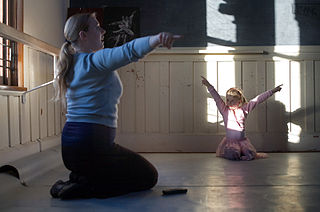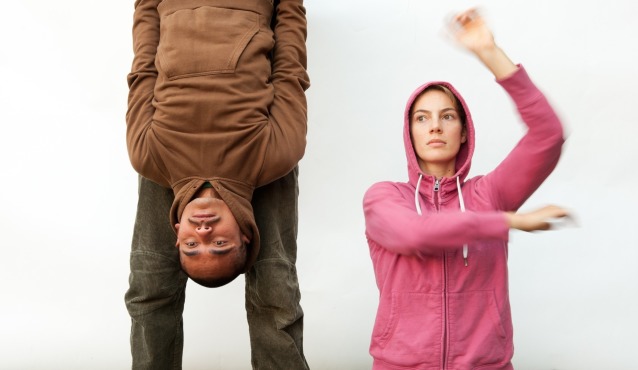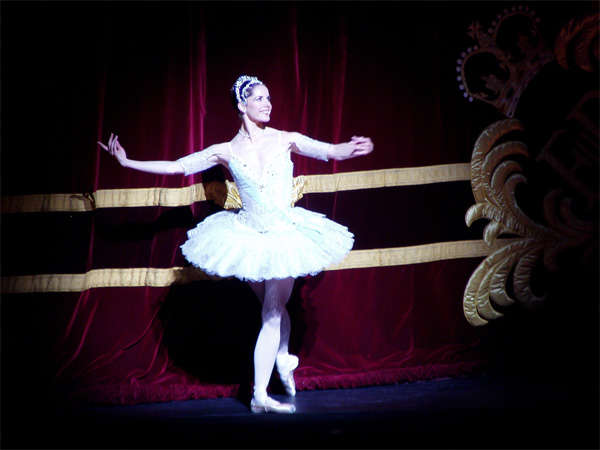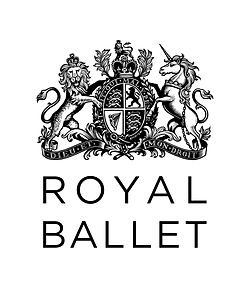 Sandrine Monin, who will be performing in Ghost Peloton with NVA & Phoenix Dance Theatre, is a professional dancer anticipating the upcoming performance of the Yorkshire Festival.
Sandrine Monin, who will be performing in Ghost Peloton with NVA & Phoenix Dance Theatre, is a professional dancer anticipating the upcoming performance of the Yorkshire Festival.
When did you begin dancing, where and why?
I started dancing when I was about 3 years old in France. I think it was kind of a love at first sight with dancing. My Mum and I went to pick up a friend at a dance school and apparently I started twirling around and imitating them. Then I just told her that I wanted to dance.
What were your early years of dancing like?
I began dancing so young that my early years dancing were mostly for fun, enjoying moving, learning routines. I started with modern dance and when I was about 7 I went to ballet classes, but then I was just having a blast dancing, regardless of any technique.
But slowly, deep inside, I kind of knew that I wanted to become a dancer, even though it seemed more like a little girl’s dream back then. But the idea stuck on and I knew I needed to start focusing on my technique.
How long have you been performing? Did you start young?
It seems like I’ve always been performing. As kid we would have a dance school show every year, then I had performances within my training and it went on until I started performing professionally five years ago.
Where did you train and what was a typical day like?
At 16, I started my vocational training in the Conservatoire National Superieur de Musique et de Danse de Lyon in France where I trained in mostly ballet, but also repertoire, partnering work and contemporary dance as well as theoretical subjects (history of dance, anatomy, music) from 9am until 6pm. Meanwhile I carried on with my academic studies at home through a distance learning organisation.
After I graduated at 19 I wished to extend my skills in contemporary dance. I moved to Germany and entered the Dance Apprentice Network aCross Europe where I worked with choreographers such as William Forsythe and Wayne McGregor. There I kept working on my contemporary and ballet training and was opened up to theatre and new technologies used.
What is a typical day like now?
Now as part of a company, my day officially starts at 10am with an hour and fifteen minute class, but I would always be in the studio at least half an hour earlier to warm up. Then we have rehearsals until 5.30pm, with one hour lunch break. In rehearsals we learn and create new pieces or work on existing ones, getting ready for the next performance to come.
How do you keep on top of your technique?
I take class every working day, contemporary or ballet according to which teacher we have. In the company we consider classes an integral part of the training and not just warm up. So everyday class is a way to improve your technique. In rehearsals, we are pushed to never be comfortable in a piece and to always challenge our own limits. We are also encouraged to try and use other techniques (yoga, pilates, gyrokinesis) and we go to the gym to build strength and stamina.
What would you say was your greatest achievement to date?
I’m just thankful to be able to live of my passion. And at the risk of being cheesy I’m glad I realised that little girl’s dream.
Which part of dance do you enjoy most?
My favorite part is definitely being on stage. It’s such an exquisite feeling to get into a character, abstract or not, and show its story to an audience. I also love how any new piece forces you to rise to a new challenge.
What advice would you give to someone aspiring to be part of the dance industry?
I think first of all you have got to love it. It’s a hard and competitive world and sometimes it feels unreachable but don’t give up.
Then, just be curious, make your own research, watch as many shows or videos as you can, surround yourself with all kind of arts. Stay open to anything, any style, don’t make preferences because you never know when it can be useful.
What’s next for you?
We are – at the moment – on tour with our new programme, but preparing the “Ghost Peloton” on the side, a performance for the departure of the Tour de France in Leeds. Then we are going to start creating a new programme very soon, so just a lot of dancing for now!
Events of the Yorkshire Festival run across Yorkshire between 28 March and 5 July 2014.
Photo Credit: Richard Moran.
 Ghost Peloton is a ground-breaking collaboration between Glasgow-based public arts organisation NVA (they of the light suits and 2012 event Speed of Light) and Leeds based dance company Phoenix Dance Theatre.
Ghost Peloton is a ground-breaking collaboration between Glasgow-based public arts organisation NVA (they of the light suits and 2012 event Speed of Light) and Leeds based dance company Phoenix Dance Theatre.
 For most young children, dance class is a time to don the pinkest tights in town and join their friends in becoming fairies, soldiers and various other characters at the command of their teacher. It is only when children become a little older that ballet and dancing becomes a little more disciplined and structured. Instead of bouncing, bending and clapping there are pliés, tendus and lots of skipping. The focus may still be on having fun, but now works to encourage the ballet basics.
For most young children, dance class is a time to don the pinkest tights in town and join their friends in becoming fairies, soldiers and various other characters at the command of their teacher. It is only when children become a little older that ballet and dancing becomes a little more disciplined and structured. Instead of bouncing, bending and clapping there are pliés, tendus and lots of skipping. The focus may still be on having fun, but now works to encourage the ballet basics. Punchdrunk’s The Drowned Man: A Hollywood Fable, presented with the National Theatre, is set to close on 6 July after a full year of performances. It is the longest running show in London in Punchdrunk’s history and has already played to over 170,000 people in over 340 performances. This number is thought to increase to well in excess of 200,000 by the end of the run.
Punchdrunk’s The Drowned Man: A Hollywood Fable, presented with the National Theatre, is set to close on 6 July after a full year of performances. It is the longest running show in London in Punchdrunk’s history and has already played to over 170,000 people in over 340 performances. This number is thought to increase to well in excess of 200,000 by the end of the run. Sandrine Monin, who will be performing in Ghost Peloton with NVA & Phoenix Dance Theatre, is a professional dancer anticipating the upcoming performance of the Yorkshire Festival.
Sandrine Monin, who will be performing in Ghost Peloton with NVA & Phoenix Dance Theatre, is a professional dancer anticipating the upcoming performance of the Yorkshire Festival. O Snap, a co-production of Het Lab Utrecht, tanzhaus NRW and supported by Take-Off: Junger Tanz Dusseldorf and Grand Theatre/Jonge Harten Theaterfestival Groningen is set to run from 22-23 May at the Unicorn Theatre in London. Aimed at participants aged 13 and above, O Snap is a dance performance about finding your own identity in an overloaded world.
O Snap, a co-production of Het Lab Utrecht, tanzhaus NRW and supported by Take-Off: Junger Tanz Dusseldorf and Grand Theatre/Jonge Harten Theaterfestival Groningen is set to run from 22-23 May at the Unicorn Theatre in London. Aimed at participants aged 13 and above, O Snap is a dance performance about finding your own identity in an overloaded world. Nicky McGinty, professional dancer and choreographer, is the pinnacle of Ballet Yoga, set to be presented at the OM Yoga Show and MBS Experience in Manchester from 10-11 May. In a unique fusion of Contemporary Ballet and Vinyasa yoga, the techniques are combined to create enormous strength, flexibility, fat burning, co-ordination and great posture.
Nicky McGinty, professional dancer and choreographer, is the pinnacle of Ballet Yoga, set to be presented at the OM Yoga Show and MBS Experience in Manchester from 10-11 May. In a unique fusion of Contemporary Ballet and Vinyasa yoga, the techniques are combined to create enormous strength, flexibility, fat burning, co-ordination and great posture. West End musical Matilda will hold a relaxed performance of its hit production in the summer. It will be aimed at audiences with autism and learning difficulties, and the Royal Shakespeare Company, which produces the show, has been working with the National Autistic Society. The performance will be held on 15 June.
West End musical Matilda will hold a relaxed performance of its hit production in the summer. It will be aimed at audiences with autism and learning difficulties, and the Royal Shakespeare Company, which produces the show, has been working with the National Autistic Society. The performance will be held on 15 June. More than 250 arts organisations are taking part in Get Scotland Dancing, part of the four-year legacy culture programme for Glasgow 2014 aimed at getting more people of Scotland up on their feet and moving to music. As a country which has a high level of obesity, the Get Scotland Dancing campaign is a fantastic initiative to encourage more people to engage with dance through the various methods of the programme of activity.
More than 250 arts organisations are taking part in Get Scotland Dancing, part of the four-year legacy culture programme for Glasgow 2014 aimed at getting more people of Scotland up on their feet and moving to music. As a country which has a high level of obesity, the Get Scotland Dancing campaign is a fantastic initiative to encourage more people to engage with dance through the various methods of the programme of activity.
 The Royal Ballet 2014/15 season has recently been announced. It will include three world premieres (with only one likely to be classical) including a new full length ballet by Wayne McGregor, a new one act ballet from Liam Scarlett in November, alongside Kim Brandstrup’s Ceremony of Innocence, and a work by Hofesh Shechter.
The Royal Ballet 2014/15 season has recently been announced. It will include three world premieres (with only one likely to be classical) including a new full length ballet by Wayne McGregor, a new one act ballet from Liam Scarlett in November, alongside Kim Brandstrup’s Ceremony of Innocence, and a work by Hofesh Shechter.